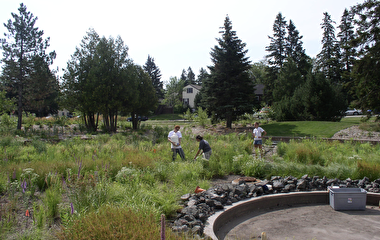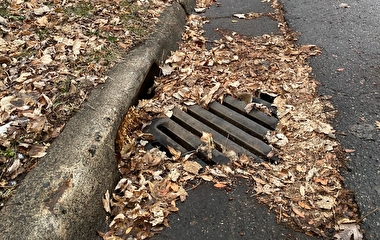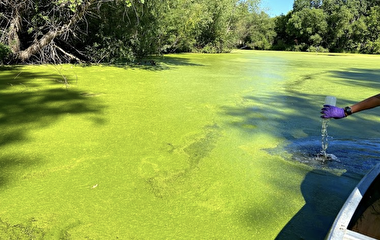Researchers from the University of Minnesota and the Mississippi Watershed Management Organization (MWMO) worked together on a unique study that aimed to measure the pollution washed into the Mississippi River when it rains in downtown Minneapolis.
“Stormwater runoff is a particularly challenging problem in large, urban settlements with many paved surfaces,” says Professor Bruce Wilson of the Department of Bioproducts and Biosystems Engineering.
When rain falls on roads, sidewalks, parking lots, and rooftops, it tends to pick up trace chemicals or particles and wash them into storm drains. These untreated pollutants ultimately end up in local rivers, streams, wetlands, ponds, and lakes—eventually harming the environment and our health.
“Because the Twin Cities sit within the Mississippi Watershed—the largest drainage basin in North America and one that reaches all the way to the Gulf of Mexico—it is especially important to understand how runoff works so that it can be better managed,” Wilson says.
Researchers from the U and MWMO worked together closely to study this process in a project funded by MWMO. First, they picked sites in downtown Minneapolis to set up rain collectors. Some of the water—collected off rooftops—came from natural rain events and snowmelt. Rain collected off ground surfaces such as roads, parking lots, and sidewalks was generated artificially so that the researchers could control how the water fell.
“Rain simulators allowed the study to focus on the role of surface types and seasonal differences by removing differences in rainfall characteristics,” explains Brittany Faust, MWMO environmental specialist.
The researchers collected samples from the sites at three different times of the year—fall, summer, and spring. They then sent the samples to a Metropolitan Council laboratory to test for contaminants including chloride, heavy metals, suspended solids, nitrogen, and phosphorous.
Some interesting findings emerged from the study. For example, runoff from ground surfaces showed the highest contaminant concentrations during the spring—particularly during snowmelt. In general, chloride concentrations from roofs were small for summer, fall, and spring, but contaminants from roofs exceeded Minnesota water quality standards for some events. And E. coli was detected in rooftop runoff.
The ground sites represented a range of automobile and pedestrian traffic, as well as impervious surfaces of different ages and materials. Roofs were selected based on the type of surface.
Although further analysis is needed, the study provides a better understanding of where and when stormwater contamination comes from: which surfaces tend to contribute the most, which contaminants are most common, and what time of year is the biggest threat.
“By performing this study, we have the potential to use this data to figure out where to include best management practice projects in downtown Minneapolis to help reduce and remove pollutants from stormwater runoff,” Faust says.



